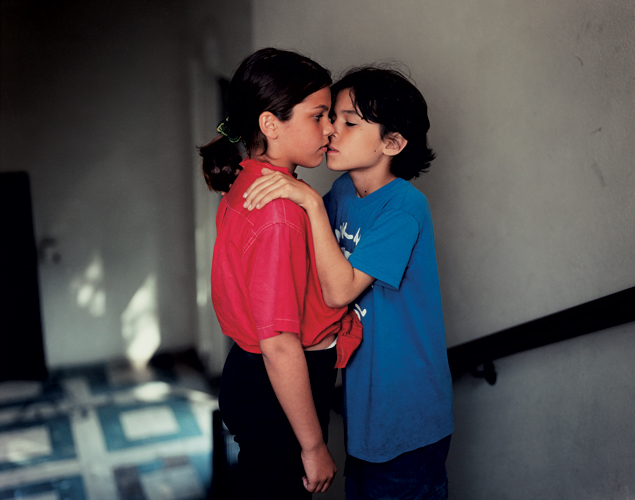
‘As one of the very few contemporary artists equally talented and influential in both still photography and cinema, the work of Sharon Lockhart (b. 1964) has engaged a rich and fascinating dialogue between two media whose deep affinities are all too often misunderstood. Lockhart’s early work drew frequent inspiration from the Seventies art cinema canon so central to her aesthetic, restaging key emotional moments into abstractly theatricalized tableaux, from the first kiss of French school children in Truffaut’s Stolen Kisses (1968)—reimagined in Auditions (1994), her enigmatic serial portraits of Los Angeles youth—to the defamiliarization of late Cassavetes in her short film, Khalil, Shaun, A Woman Under the Influence (1994).
‘Favoring a static camera, and dynamic mise-en-scène that plays with depth and surface and renders ambiguous the distance between theatrical and natural gesture, Lockhart’s subsequent film work balances its polished, high art aesthetic and formal rigor with a keen and politically astute ethnographic attention to its arresting and markedly “foreign” subjects—the Japanese small town girls basketball team in Goshogaoka (1998) and the largely indigenous population of a tropical Brazilian hamlet in Teatro Amazonas (1999). Using nonprofessional actors these two films make bold, unexpected use of the overtly theatrical space of the basketball court and the lavish titular opera house to discover cinematographic majesty and mystery within the everyday.
‘Early in her career, Lockhart identified film as a medium through which she could explore the quiet and unremarkable. The meticulous yet quasi-formulaic construction of Lockhart’s films, characterized by rigorous stillness or minimal movement of the camera, often feature people, spaces, and events that might otherwise go unobserved in fine art. After meticulous study, Lockhart activates these subjects through choreographed movements and understated camerawork. In fall 1996, Lockhart embarked on a three-month residency in Japan’s Ibaraki Prefecture. During her time in this Tokyo suburb, the artist regularly attended the training sessions of a girl’s basketball team at a local junior high school. In her 1997 film Goshogoaka, comprised of six single-shot sequences, a curtain serves as a literal backdrop for the team’s movements, choreographed by Lockhart and dancer Stephen Galloway. As players run on and off screen, tensions oscillate between the fixed camera and the moving subjects. In an accompanying set of photographs, the variations in perspective that are so conspicuously absent in the film fix the players in static positions. In both her films and photographs, Lockhart elevates quotidian routines into events that are emphatically calm and subtle, yet completely mesmerizing.
‘In Lockhart’s 2008 film Lunch Break, a tracking shot, which has been slowed down digitally, brings viewers through a hallway of the Bath Iron Works factory in Maine and presents a structured visual experience of forty-two workers partaking in their midday break. Throughout the film, the camera’s deliberately measured movement allows viewers to concentrate on the hallway’s social function; during the break, workers converse, rest, and eat within the confines of this liminal space. Extending the lunch break into an eighty-three-minute film, Lockhart creates a detailed portrait of a group of people who are regularly united at a specific time and place and by a particular set of conditions. Lockhart’s choreography-and in the case of Lunch Break, the almost lethargic camera movement-transforms everyday spaces and events into poetic subjects.’ — collaged
____
Further
SHARON LOCKHART STUDIO
Sharon Lockhart @ Gladstone Gallery
Tribute to Sharon Lockhart
Book: Sharon Lockhart ‘Pine Flat’
What it Takes to Be a Woman: Artist Sharon Lockhart’s Call for Female Empowerment
SHARON LOCKHART’S Milena Milena
Timestage. The Cinema of Sharon Lockhart
Video: Sharon Lockhart: An Interview
1000 WORDS: SHARON LOCKHART
The world of labour in Sharon Lockhart’s photos
SHARON LOCKHART IS A BIG DEAL IN EUROPE
Sharon Lockhart gives voice to Polish girls and Jewish orphans
The Films Of Sharon Lockhart
Q/A: Sharon Lockhart
Experiments in Fact and Fiction: The Films of Sharon Lockhart
____
Extras
Sharon Lockhart | CI08 Life on Mars
Sharon Lockhart: Little Review / Polish Pavilion, Venice Art Biennale 2017
Artist Conversation: Sharon Lockhart
____
Interview

James Benning
I’m sitting in the Country Girl Saloon in Castaic, California, with Sharon Lockhart. I thought we should start by defining a philosophy of life. Even though our work is sometimes written about together, there are some major differences, and I think those differences stem from a difference in philosophy. Just as I say this, a song comes on the jukebox. It’s a country and western song, and we hear, “God is great, beer is good, and people are crazy.” That’s perfect. There it is. I guess I believe in two of those things. Certainly, beer is good, but here is where we differ: I think people are crazy, and consequently my latest work features few or no people. Where does your interest in people come from?
Sharon Lockhart
I’m naturally inquisitive and trusting and have always been interested in how people live and think. My mother always said, “If everyone were the same, life would be pretty boring.” I feel I learn something from everyone. I’ve always been a social person, and I come from a very social family. What I like most when I’m making work is getting to know people and involving them in the project.
JB
How do you do that? How do you involve a community in a project?
SL
It’s different each time. But in general, I find an interest, approach people whom I want to invite to participate, establish a rapport with them, and develop the project. Then there’s an exchange at the end. Usually, people start out being hesitant, but also strangely intrigued. As they get to know me, I explain what I’m doing and I show them the things that are interesting me, and they see that it could be fun to participate. It’s important to me to have everyone feel that they are a part of the project.
For Pine Flat (2005), it was an organic process: the kids found me. Slowly, over the course of a year, I realized we had developed a unique friendship and that it might be interesting to make a film with them. By that point, I knew practically everyone in town, and the adults trusted me with their children. Many times, the adults suggested that I work through the school or the church, but I chose not to because I was more interested working outside such institutions. Not everyone agrees with them, and I didn’t want to exclude anyone.
For Lunch Break (2008), I had a very hard time gaining access to Bath Iron Works (BIW) because of strict government security. Prior to moving to the East Coast, I spent ten months having official letters sent to management explaining who I was and what the project was about. But they said “no access” each time. It wasn’t until I arrived in Bath and began to talk to people in town, who I met through family friends or friends of friends, that Local 6, the union, invited me in for a meeting. They loved the project and fought for my access. Once I had access, everyone, from management to the workers, was very friendly and accommodating.
Also, I should add that bringing in books of images throughout the course of the project solidified my relationship with the workers. I first brought books with images of workers, so that the workers could see that there were visual precedents for my project. They could see that the project included them in a visual history, and they wanted to be a part of it, which deepened their interest in what we were doing. I brought in books with photographs by Lewis Hine, by photographers employed by the Farm Security Administration during the New Deal, and by Chris Killip, who photographed at the Pirelli tire factory in England. I also brought in books showing sculptures of workers, as well as stills from the Lumière brothers’ first film, which shows workers leaving a factory at the end of a shift. Later, when I developed the idea of making the lunch box photographs, I brought in images of still life paintings.
JB
Some artists gain access by using money. How do you feel about this?
SL
I’ve always made it clear that my work is about a different kind of exchange. When I made Teatro Amazonas (2000), I chose to interview six hundred people to play the part of the audience members in the theater. Everyone told me to just pay these people, but not one person I interviewed ever asked about money. Instead, I created a relationship with the participants through the interviews. In all of my projects, I work hard to make the participants partners, so that the exchange is a personal one, rather than the abstracted exchange that money creates.
JB
Earlier, you said that you learn something from everyone. Being a mathematician, I have found that there is more variability within groups than between them. That is, I could conclude that the variability within the community of workers at BIW is greater than the variability between this community and, say, a community of Los Angeles artists. Did you find this variability among the workers?
SL
Yes, there is a lot of variability among the workers, even though most of them are from very similar backgrounds. For example, when you walk through the yard, you can see a range of political viewpoints. In the United States, the labor movement has engendered a strong left-wing tendency among workers, but a certain conservatism among working- class Americans counters this tendency. The diversity among the workers was clear to see on the stickers that they put on their lockers. Also, the workers at BIW are part of the defense industry. Many told me that they felt good about contributing to the nation’s defense—they saw themselves as working together for the betterment of their country. In fact, a number of them had served in the Marines or the Navy. This fact, coupled with a strong union, created an interesting relationship. But the political coalition that created this relationship is somewhat of an anachronism today. Everything is so much more fractured now—most of the guys see what they do as just a job, and they know that it is one of the best jobs in Maine. I should also add that, although during World War II, most of the workers were women, today most are men. Even so, there is gender diversity as well at the factory; not coincidentally, the first worker you see in the Lunch Break film is a woman.
Yet, I would say that everyone got along. They kidded each other about their different political or cultural beliefs, but they all seemed very social and worked well together. In the carpentry shop, one younger worker would spend his lunch break reading the Bible, while his co-workers gambled at cards next to him. Also, there were some really wild guys (and women) with long hair and tattoos who rode Harleys, and there were also conservative family guys—some of the long-haired bikers were conservative family guys as well.
JB
I’d like to know more about the workers. What kind of music did they listen to? What were their lunches like? What did they read?
SL
As I’ve said, they are a fairly diverse group. One guy had a lunch box that was like a filing cabinet, filled with every school picture of his daughter from kindergarten to senior year; after he ate, he’d go through and organize them. Many guys played cards and did crossword puzzles. More than anything, they all have a great sense of humor, and both told jokes and played jokes on one another constantly. The lunch box has been the home to a few surprises over the years. One of my favorites was when they tack-welded one guy’s metal lunch box to a bench.
I heard a lot of different music as people were working. Every building in the yard has its own sound- track. Heavy metal was always playing in the Aluminum Shop, classic rock in the Assembly Hall, and country and western in the Tin Shop. In fact, one of the supervisors in the Tin Shop was a country and western musician who had once played with my father. Walking through the yard was like listening to a radio as the tuner changed from station to station.
And, as you can see in the film and photographs, a lot of the workers read the newspaper. Newspapers were strewn around almost every work area. They know what’s going on. They understand their place in the economy and are sophisticated about media. One guy I photographed is a sci-fi enthusiast who was always reading novels at lunch. Others read technical manuals, photography magazines, as well as hunting and fishing magazines. All this reading got me thinking about how this workplace is tied to analog technology, which is shared in a different way than digital technology. A newspaper gets passed around; it’s social, portable, and exists in the world.
JB
In relation to this project, were you at all interested in music’s role in the labor movement in particular and politics in general? I’m thinking of your use of the Led Zeppelin song.
SL
Yes, I researched the history of work songs and labor music. The connections among work songs, the blues, and rock and roll played a part in my choice of the Led Zeppelin song. I thought about using something more esoteric, but I wanted a song that would be on a pop radio station and still carry the history I was thinking of (I also liked the way it mixed with the machine sounds). Also, even though today the political content of rock and roll is not as strong as it was in the past, there is definitely a “politics” of music that is still relevant in the context of labor. I’m thinking in particular of an incident I read about during the course of my research. Management at a General Motors factory once told the workers that they would no longer be permitted to listen to music during work hours because their radios used too much electricity. The workers responded by connecting their radios and huge speakers to car batteries that they brought into the factory. Management finally relented and permitted them to listen to music, a huge victory for the workers.
JB
You often work in both photography and film. For Lunch Break, how do the photographs and film work together?
SL
This is the first time I’ve made several films and several photographic projects to go together. Each one adds new pieces of information, giving viewers new ways of seeing all the other components. As portraits, the lunch box photographs engage the problem that I was grappling with in the film Lunch Break: how do you get around the clichés that riddle the representation of workers? Through their construction, their decorations, and their contents, the lunch boxes tell you so much about the people who own them and their culture—their rituals, personal choices, skills, and interests—as well as about all the trades that go into shipbuilding and about the ships the workers worked on.
One connection between different components of the project that I really like is how the film Exit shows the lunch boxes leaving the yard in the hands of their owners. I talked with some of the workers about the weight of a lunch box in the morning versus the afternoon—how it swings, and how that affects the way you move. We also talked about what they thought about when they were walking out each day, or the friends who always waited for them at the corner. These are simple aspects of everyday life and the moments that I was interested in hearing about. Besides being a document of the workforce—like the ratio of men to women, and how apparent that becomes when you watch everyone leaving the yard—more than anything else, Exit is a social film. I feel everyone can relate to it in a very direct way.
By contrast, the photographs of the independent businesses take the social nature of the factory to a different place. These tableaux allow you to see the development of an organic economy within the larger frame of industry. They also complicate any stereotype of the factory as a purely hierarchical, top-down structure. What really interested me in BIW was the way the surfaces of the factory were mediated from the bottom-up as well. Lastly, I printed a selection of the portraits we did of workers on their lunch break. These were inspired by Baroque paintings depicting groups of people sharing a meal or table. The social dynamics that lined the edges of the frame in the Lunch Break film are treated in a frontal way in these photographs. For the most part I tried to avoid the typical worker portrait in this project, and you don’t see workers in the other photographs. In this case, though,
I wanted to give the social relationships that initially drew me into this project a place of importance.
JB
Lately you have been presenting the film in both a theatrical space and as an installation. Each place has a very different feel and a completely different connection to audience. For me, they are entirely different works.
SL
I’ve always been interested in the social space of the cinema and the fact that, when you go to see a film, you are making a communal commitment to spend time. This was one of the reasons that Goshogaoka and Teatro Amazonas were made specifically for that kind of formal space and not for a walk-in museum space. At the time, I was reacting to certain video installations, which were not considering duration at all. Later, with Pine Flat, I wanted to make a film that commented on both viewing experiences—that embraced how little time one spends in a gallery and called attention to how we see both still images, like paintings, and moving images. I don’t think there are many people out there who actually sit through a film, start to finish, in a gallery. I figured twenty minutes was an average viewing time and worked from that. I’d been working with two friends, the architects Frank Escher and Ravi GuneWardena of the firm Escher GuneWardena, since 2000 on installation designs for my film work, and I had begun working with them more intensely at this point. For Pine Flat, we designed two identical viewing spaces that split the film into two equal halves, and screened one take from each half each day. That meant that you could not see the whole film in a gallery setting in one sitting. I hoped that the gallery version would be completed socially outside of the gallery—that people would talk about the parts they saw and in that way put together the whole film—or that they would choose to go to the cinema to see the linear version, or would revisit the gallery for a new experience.
With Lunch Break, I wanted to have the space echo the content. This time, Frank and Ravi designed a viewing situation that echoed the hallway in the film. I don’t really like the way light-locked or curtained rooms pretend to be small theaters. We wanted the installation of Lunch Break to call attention to the architecture as part of the piece, not merely its enclosure. This is why we came up with a freestanding tunnel, creating its own set of architectural relationships with the larger exhibition space. When viewers walk into it, they are not confined by the space. You enter it as you do a hallway; it feels like an in-between space connecting the space of the film and that of the gallery, a liminal space.
For Exit, we designed something different. While Lunch Break is about the movement of the camera (and vicariously, the audience) through space, Exit is about the movement of the people in the film through the static space of the camera. The brightness of the projection also allowed us to keep the architecture light, to reveal the room in which the film is playing. The box we built for this installation is a projection box, housing the projector and coming between the door and the screen, blocking the light. We thought of it as an inside-out version of the standard architectural intervention for showing video in a gallery. It also acts as an object you have to move around, and I like how that brings attention to your own movement in (entering) and out of (exiting) a work.
JB
When you finish a project, you often stay involved with the community. You seem to create an everlasting bond. Could you tell me more about this?
SL
Since Pine Flat, I have had more trouble ending a project and moving on, even after the exhibition is up or the publication is done. I am sure this is because my involvement with the communities is stronger now, in part because I am working closer to home and over a much longer period of time. After I finished Pine Flat, I worked for months on a slide show of the production with the snapshots I had made over the years and a soundtrack of music I thought everyone would enjoy. We had a big event, and one of the older children, who aspired to be a chef, made a meal for everyone in town. We also screened the entire two-hour film, along with the slide show, and had an awards ceremony and musical performance by Becky Allen. I worked as hard on that part of the project as on the original production, and I was more nervous about its reception than the screening of the film at Sundance.
For Lunch Break, I’m producing a newspaper, called Lunch Break Times, which I’m taking back into the factory around the time the exhibition opens at the Colby College Museum of Art in Maine. I see the Colby show and the newspaper as ways of bringing the project back to the workers who participated. Also, the Lunch Break exhibition at Colby will be accompanied by a selection of Maine-related objects from the museum’s collection combined with some crafts that the workers have made. They made all kinds of things, from the metal crafts you might expect, to glassware, paintings, and photographs. One guy even made his own lunch basket: he cut down an ash tree, planed strips to weave the basket, and made brass fittings for all the corners and hinges. I think my presence drew out some of the creativity of the workers, but I also think that the stereotype of the tough-guy worker was subverted at every turn. So, the entire top floor of the museum will be another curated aspect of the installation unique to its venue in Maine.
As for the newspaper, BIW has a rich oral tradition, and I wanted to expand on that. I went back to Maine this summer to record interviews, gather material, and also to distribute the 11 x 14″ formal worker portraits I made of everyone to the workers, along with two six-foot-tall photographs of the lunch group scenes, which they hung in the Assembly Hall.
I drove around the state, revisiting some of the locations where I had originally filmed and collected more stories, recipes, and jokes from people. I want the newspaper to include some of the people I was sad weren’t represented in the final project. I also thought it might be more interesting to the workers at BIW to read something other than their own stories. I thought they’d be interested in the stories of potato farmers, sardine packers, loggers, and others. I imagine the copies of the newspaper floating around the different factories for a few weeks until they all disappear.
I like the ephemeralness of the analog information flow. It seems to me more on the level of storytelling. Something that circulates and disappears.
___
Show
____
Little Review, 2017
‘Little Review is a precisely composed filmic portrait of the girls of the Youth Center for Sociotherapy in Rudzienko, Poland. Suggesting an abstract translation of the eponymous publication, the film comprises three acts and a satirical prologue performed by the young women evoking the resilient and candid spirit of Korczak’s newspaper. Set against a black background that refuses a single context, the scenes are resonant of the history of a diverse group of practices in both the visual and performing arts. Given this space to be seen and heard, the young women, like Korczak’s writers, command performances full of nuance and self-possession. The nearly hypnotic repetition of the English words “trust,” “hate,” “love,” and “hope” in the first scene is followed by a deconstructed piano solo. Considered together with the tableaux of energetic movement in extreme slow motion in the final sequence, the young women’s actions can be seen as allegories of adolescence, evoking challenges both individual and universal.’ — SL
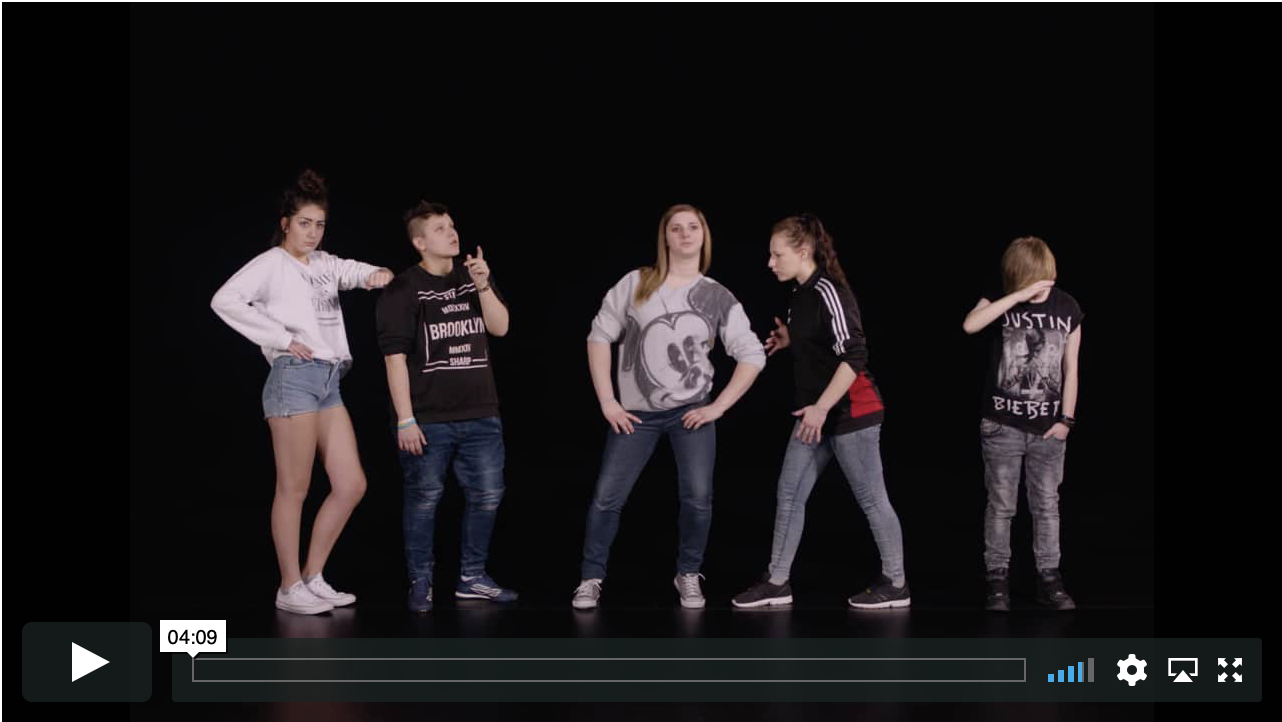
_____________
Ola, “AS THE HEART SPREADS JOY…,” National Library of Poland, Warsaw, February 3, 2017
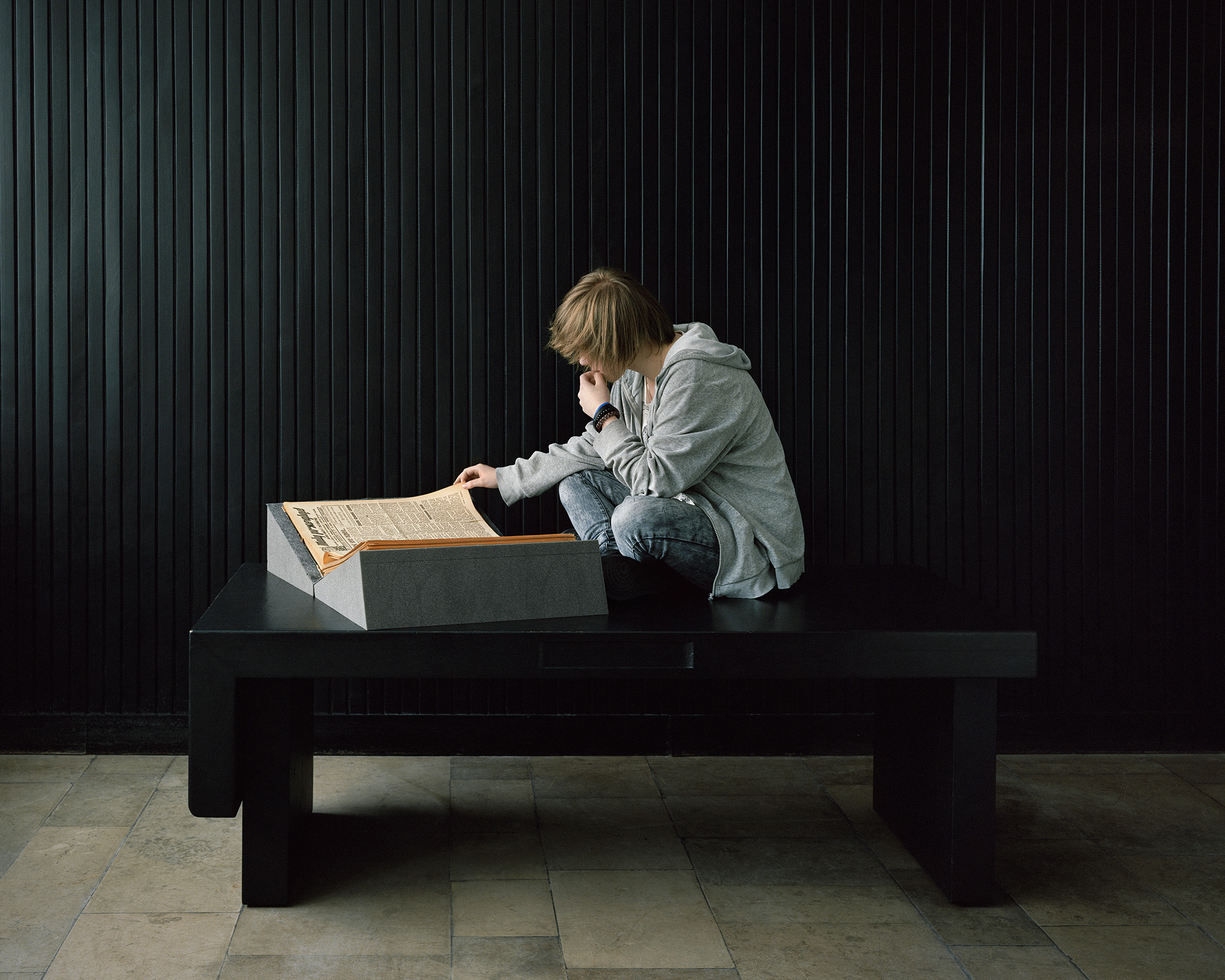
____________
When You’re Free, You Run in the Dark, Klaudia, When You’re Free, You Run in the Dark, Selena, When You’re Free, You Run in the Dark, Bula, 2016

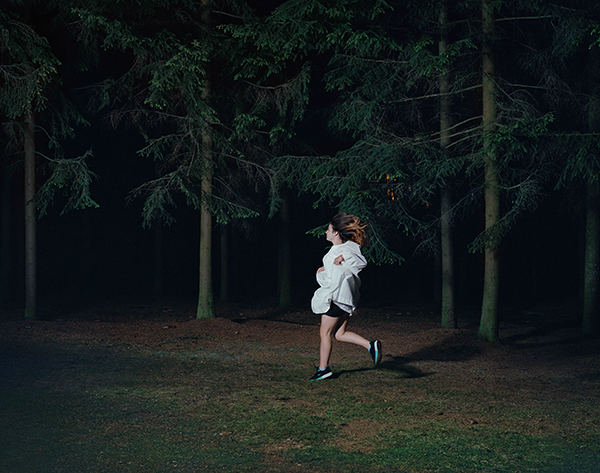
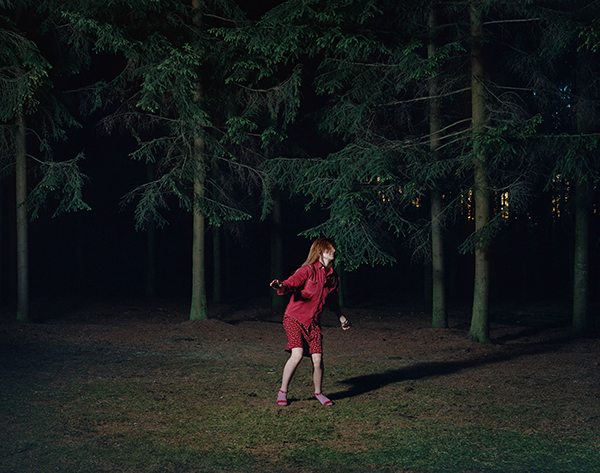
_____________
Rudzienko, 2016
‘Sharon Lockhart’s film Rudzienko was shot over two years in collaboration with the residents of the Youth Center for Sociotherapy in Rudzienko, Poland. Building on the relationship she established in 2009 with Milena, who later moved to the center, Lockhart conceived of a series of workshops to empower the young women. The group worked together to develop dialog and movements to be enacted on camera based on their collective activities. The resulting film features a range of conversations, from the philosophical to everyday teenage concerns, and depicts actions both theatrical and mundane that voice the girls’ rich humanity. The Polish-language film proposes an innovative approach to the relationship between image and language by offsetting the spoken conversations with their written translations.’ — SL
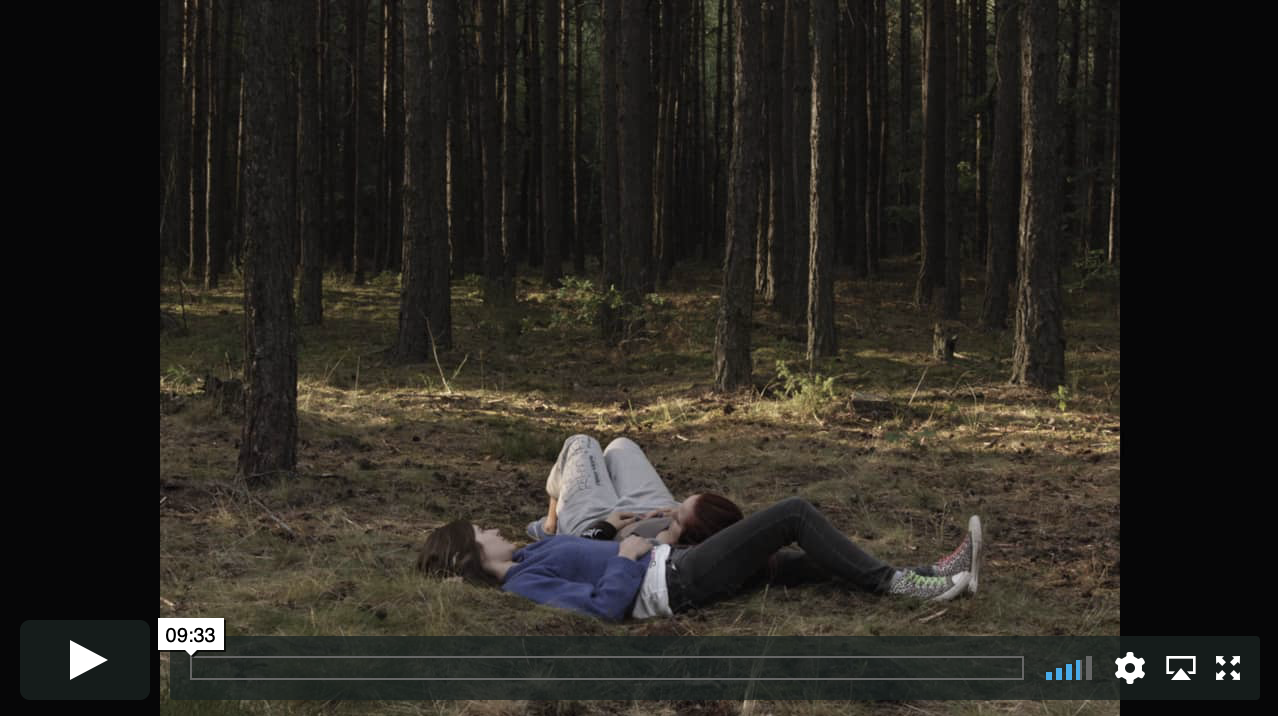
_______________
Antoine/Milena, 2015
16mm color/sound film transferred to HD
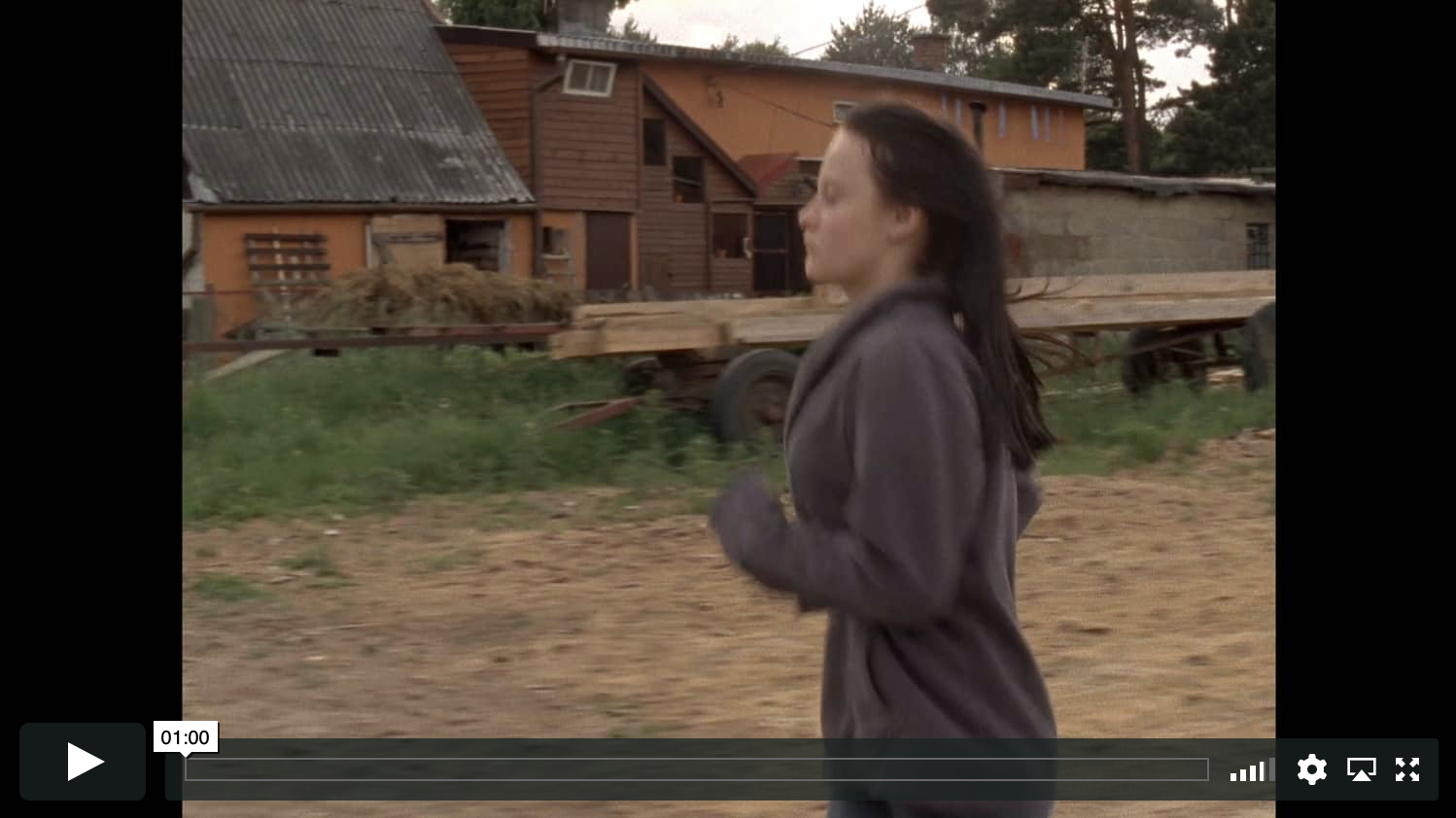
___________
Milena, Jarosław, Poland, 2013, 2014

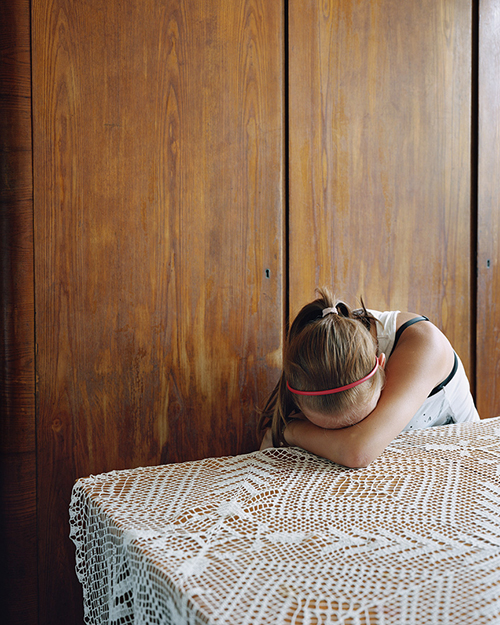
___________
Pódworka, 2009
‘Sharon Lockhart’s new film, Pódworka, takes as its subject matter the courtyards of Lodz, Poland, and the children that inhabit them. A ubiquitous architectural element of the city, Lodz’ courtyards are the playgrounds of the children that live in the surrounding apartment buildings. Separated from the streets, they provide a sanctuary from the traffic and commotion of the city. Yet far from the overdetermined playgrounds of America, the courtyards are still very much urban environments. In six different courtyards throughout the city of Lodz, we see parking lots, storage units, and metal armatures become jungle gyms, sandboxes, and soccer fields in the children’s world. A series of fleeting interludes within city life, Pódworka is both a study of a specific place and an evocation of the resourcefulness of childhood.’ — SL
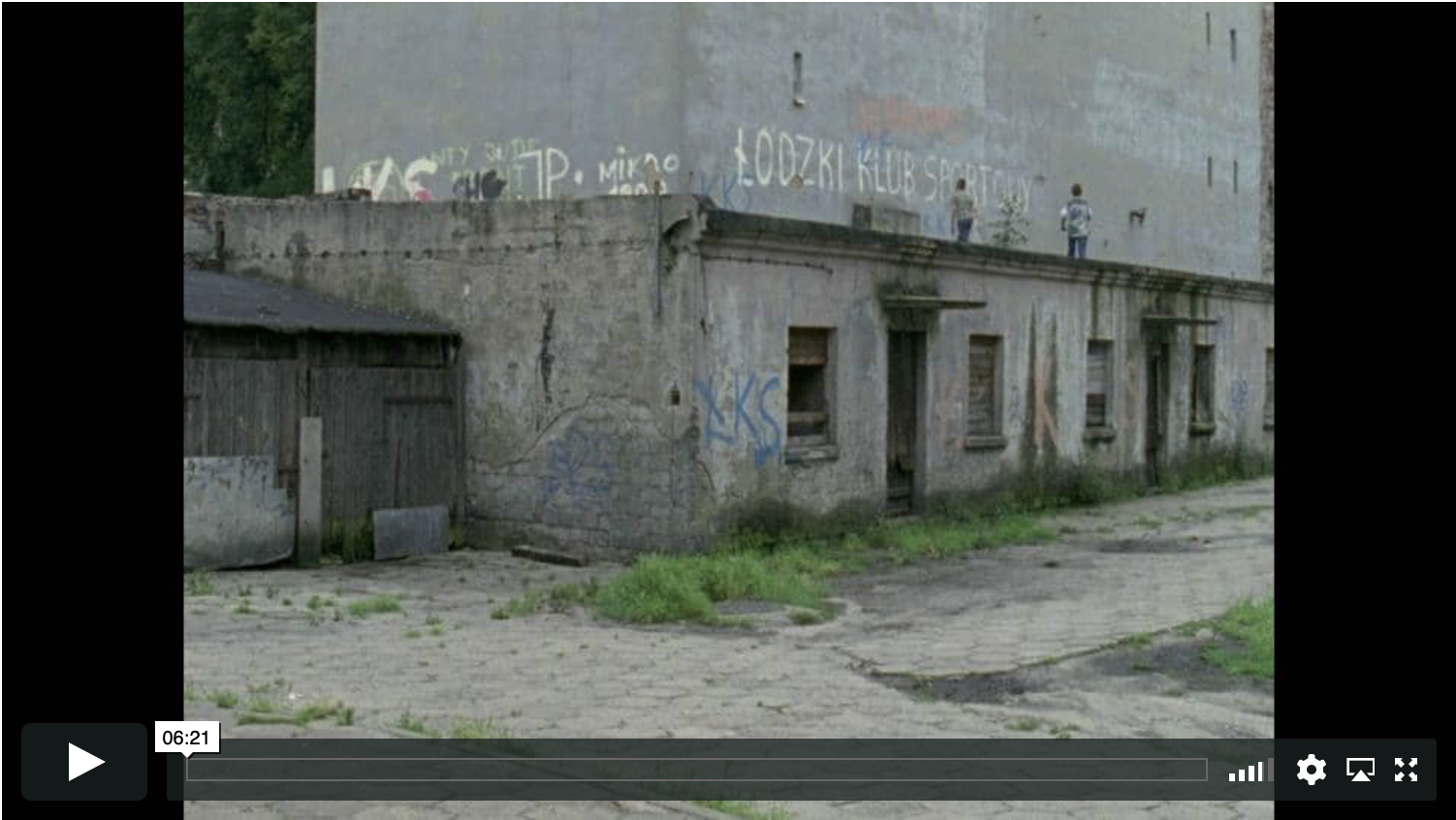
_______________
Double Tide, 2009
‘Double Tide documents the work of a female clam digger in the mudflats of coastal Maine. Expanding the focus of Lockhart’s recent films Lunch Break (2008) and Exit (2008), Double Tide creates a portrait of a relatively unseen and singular form of labor. Filmed on the rare occasion in which low tide occurs twice within daylight hours—once at dawn and once at dusk—Double Tide takes as its subject a worker whose job is defined by the most elemental and unchangeable forces of nature.’ — SL
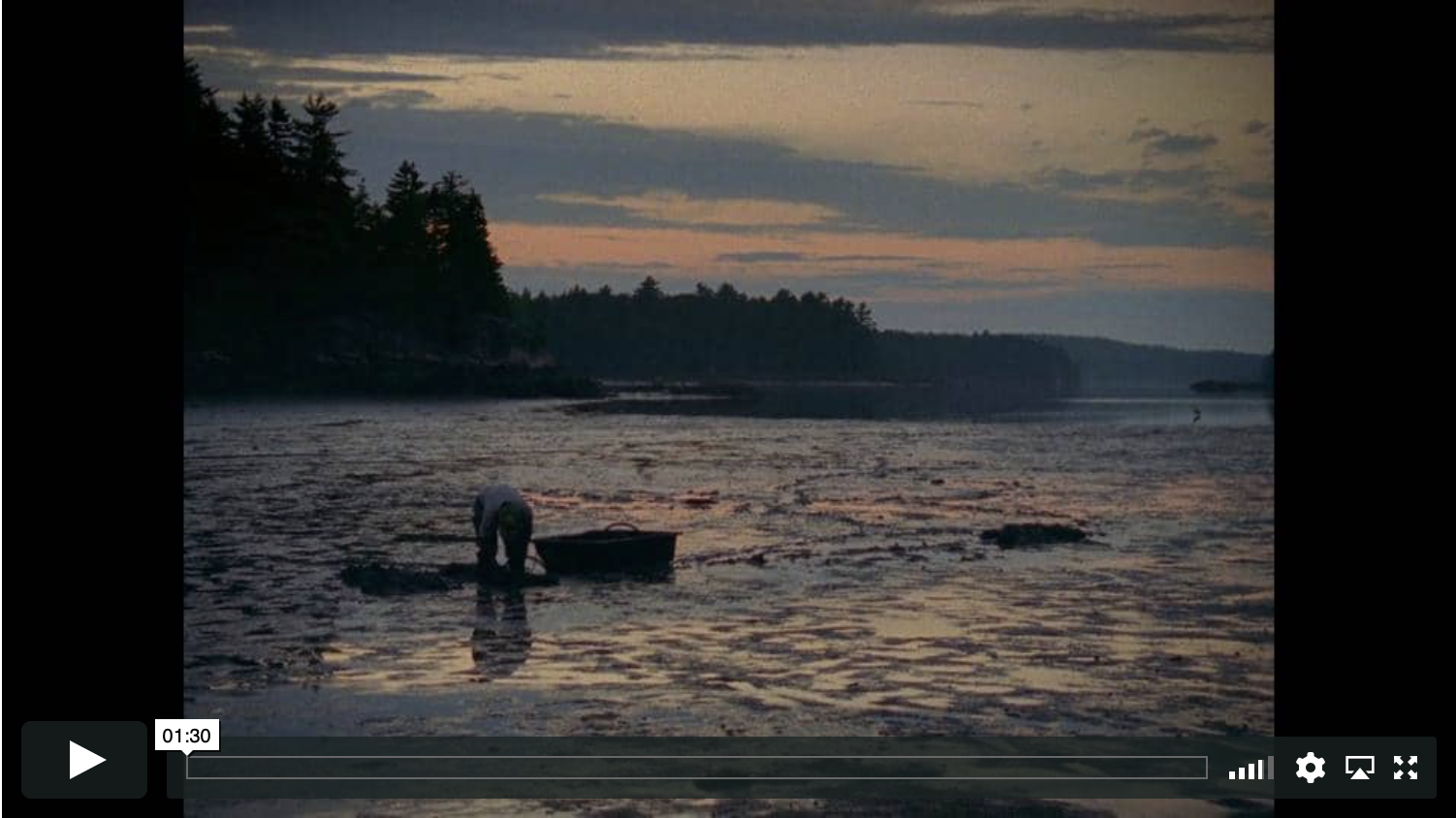
_______________
Lunch Break, 2008
‘Lunch Break features 42 workers as they take their midday break in a corridor stretching nearly the entire shipyard. Contrary to her previous films, the camera is untethered and, as it slowly moves down the corridor, we experience what was a brief interval in the workday schedule expanded into a sustained gaze. Lined with lockers, the hallway seems not only an industrial nexus but also a social one, its surfaces containing a history of self-expression and customization. Over the course of the lunch break we see workers engaged in a wide range of activities–reading, sleeping, talking–in addition to actually eating their midday meal. The soundtrack is a composition designed in collaboration with composer Becky Allen and filmmaker James Benning, in which industrial sounds, music, and voices slowly merge and intertwine. Together, picture and sound provide an extended meditation on a moment of respite from productive labor.’ — SL
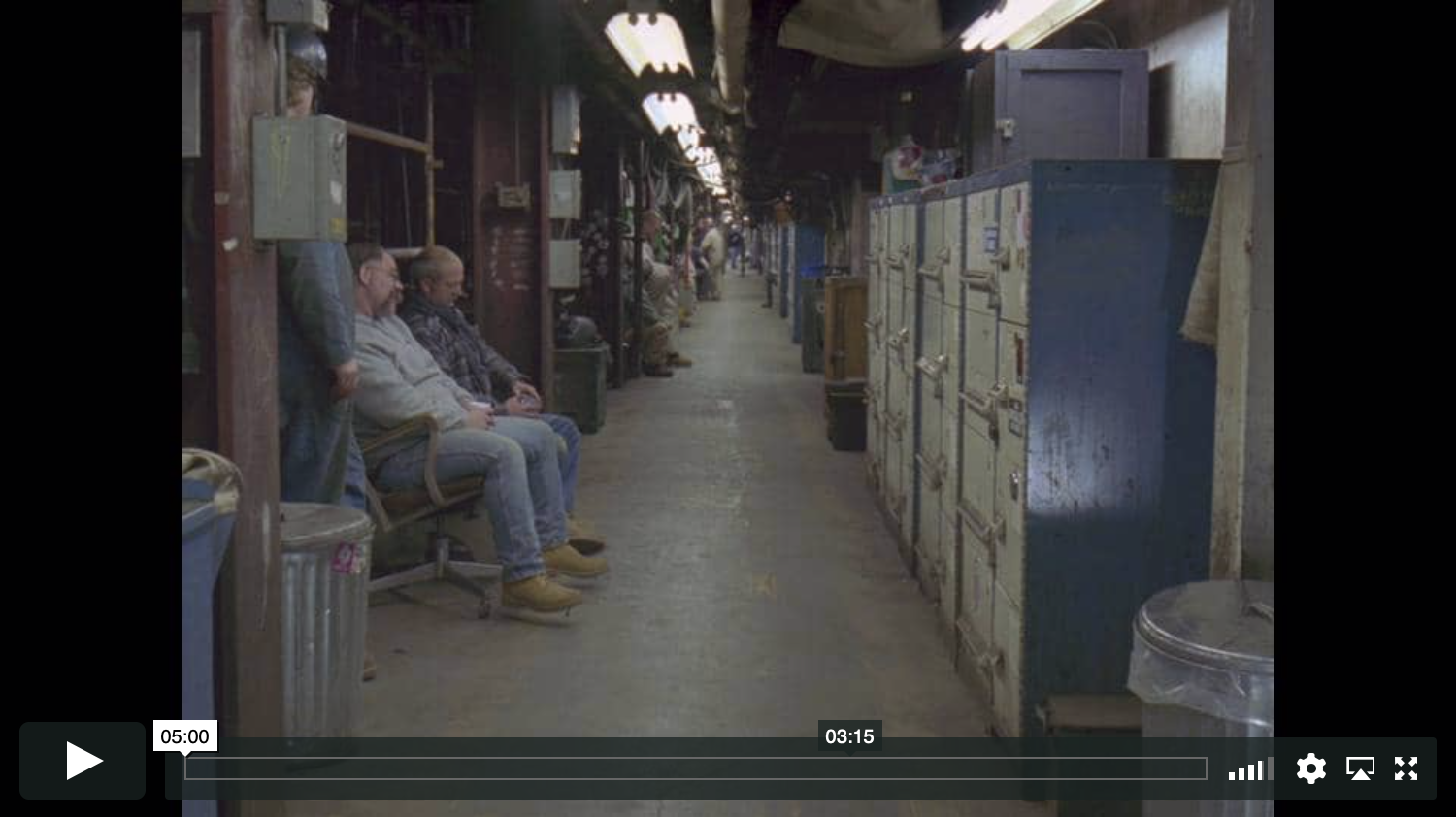
____________
Untitled, 2007
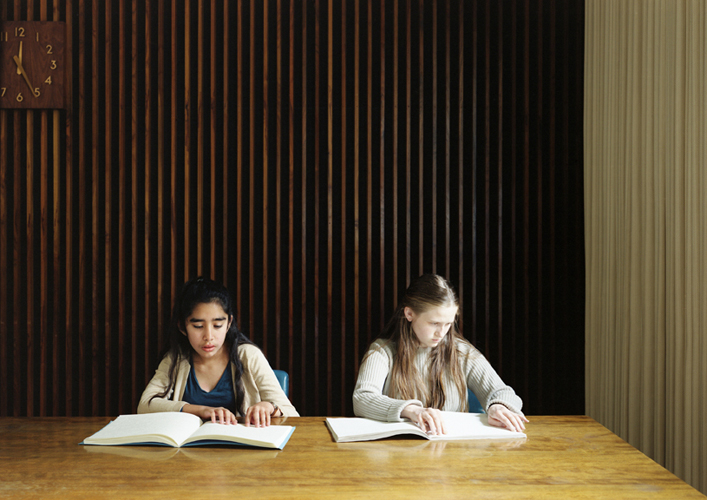
___________
Untitled, 2005

_____________
Chronicle of Masonry Work in the Oaxacan Exhibit Hall, National Museum of Anthropology, Mexico City 1999, 1999
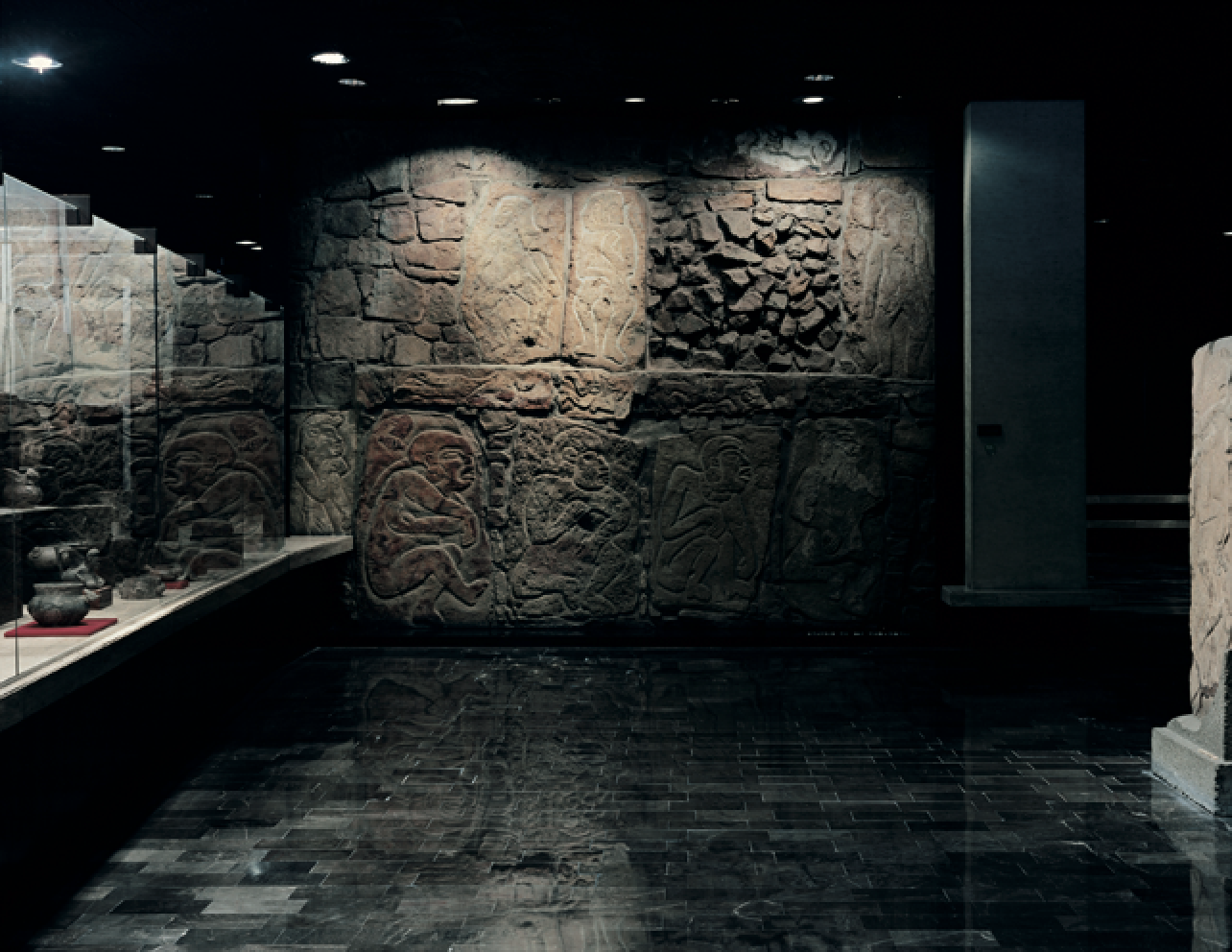
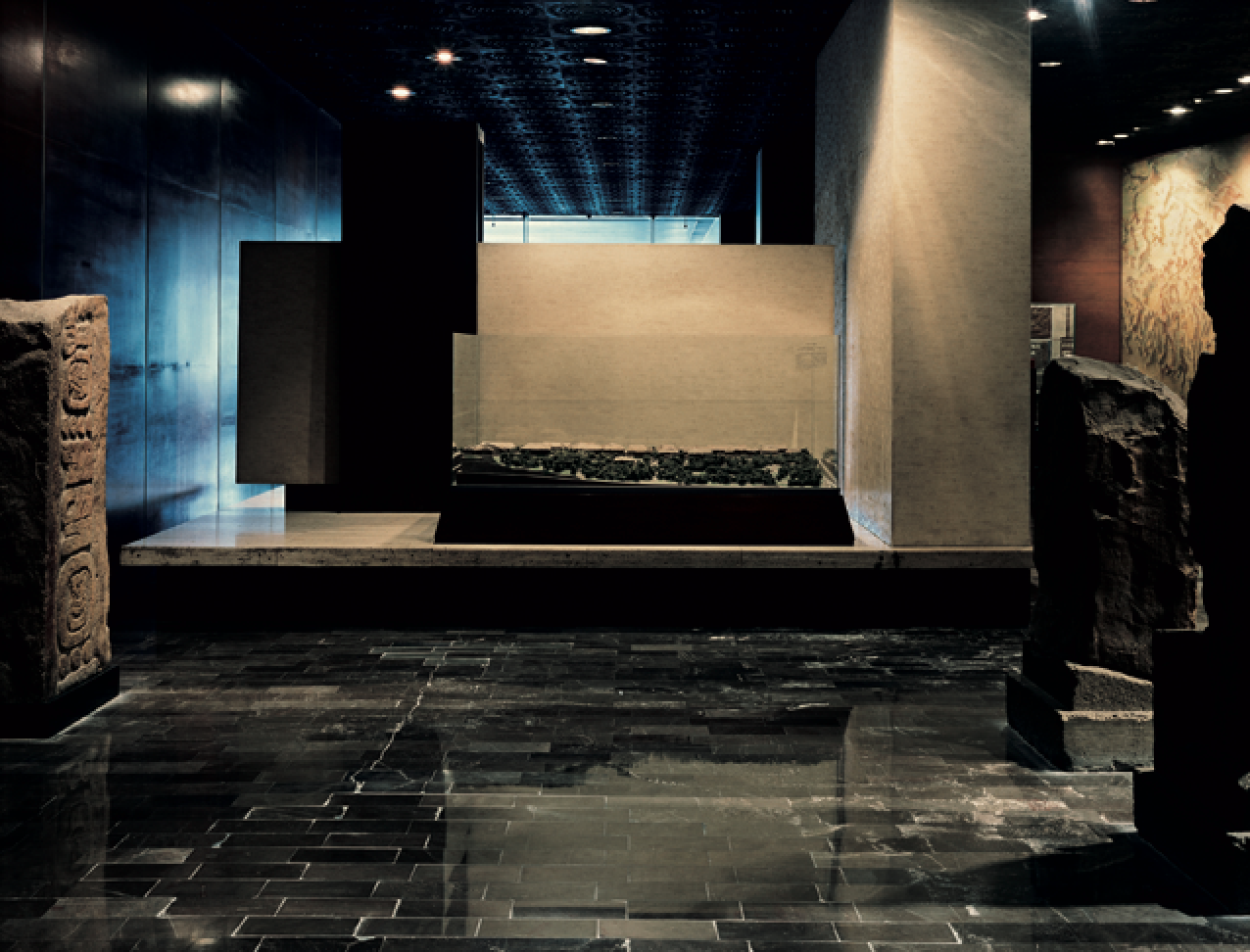
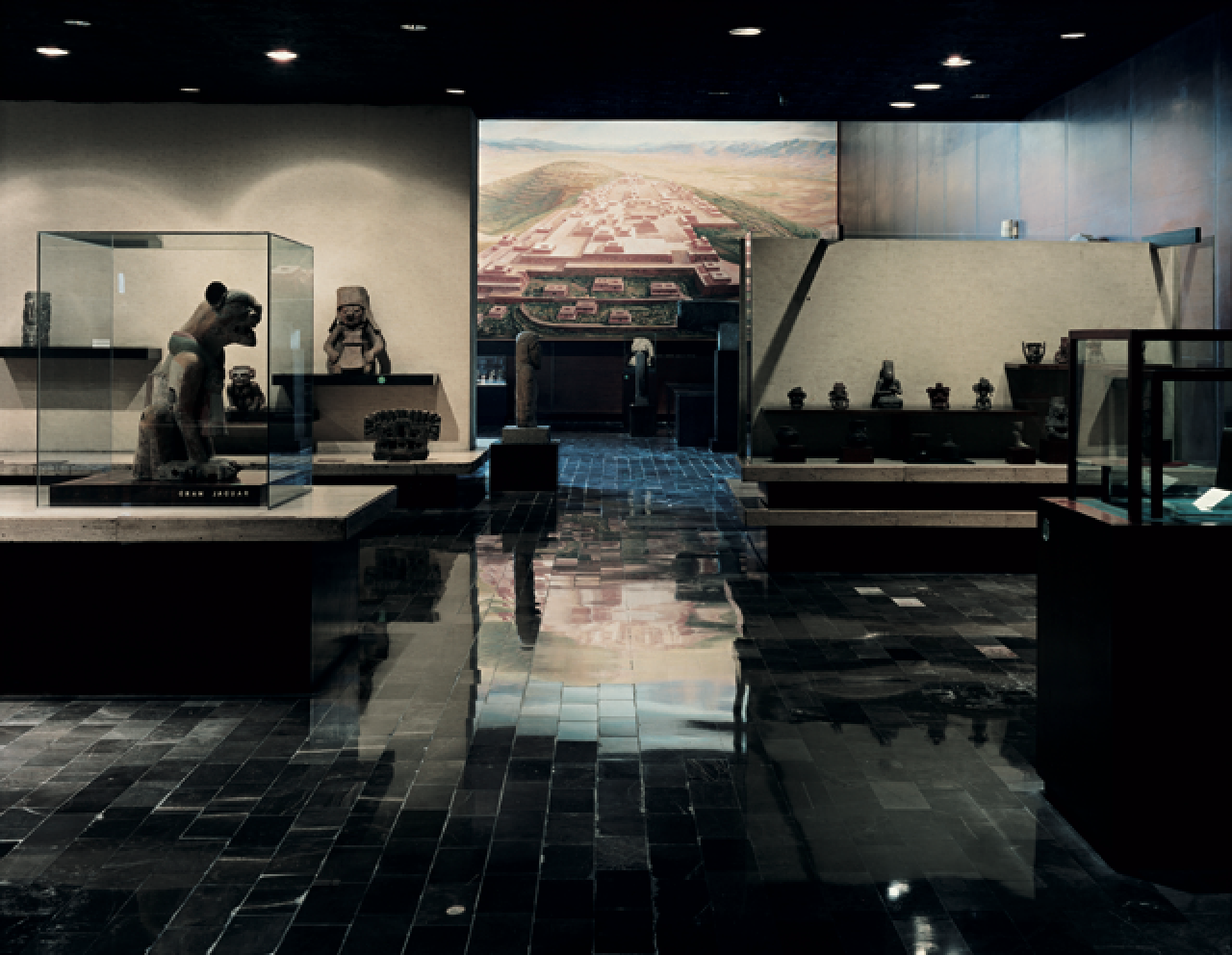
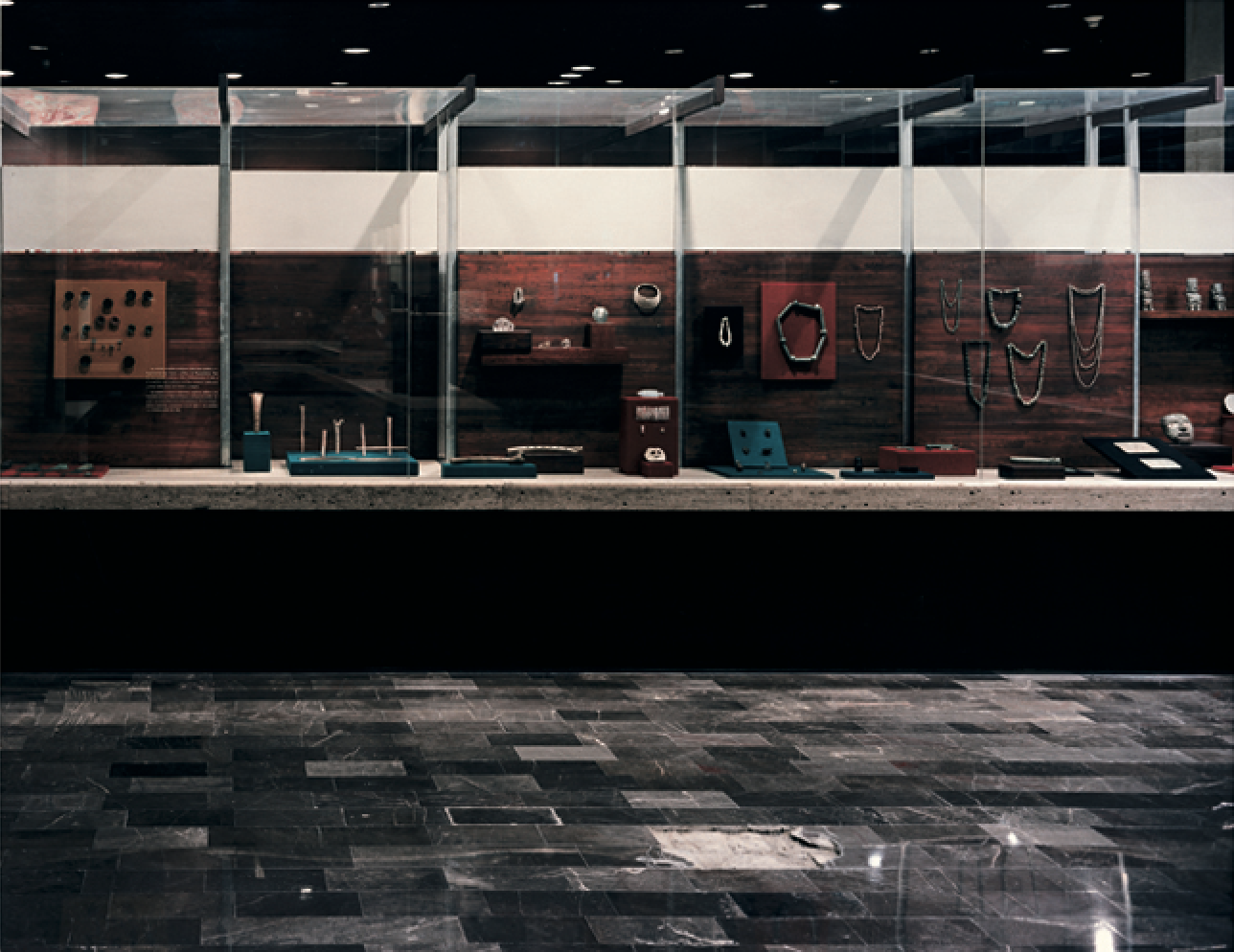
_____________
Goshogaoka, 1997
‘Filmed in a middle school gymnasium in suburban Japan, Goshogaoka takes as its ostensible subject the exercise routines and drills of a girls basketball team. The film consists of six ten-minute takes, shot with a fixed camera at court level, in which the various cadences of chanting voices and bodily movements digress into distinct studies. Taken together they construct a subtle and multi-layered social portrait, a portrait framed within a study of choreographed movements (the routines, etc.) and therefore one in which documentary values soon become inseparable from aesthetic ones. And as there are no games, scrimmages, or barking coaches here, just the girls and their routines, the image is not so much one of contest and gamesmanship but of individuation within a scene of group cooperation. A scene, by the way, where shyness, camera shyness included, goes hand in hand with an odd sense of social comfort.’ — SL
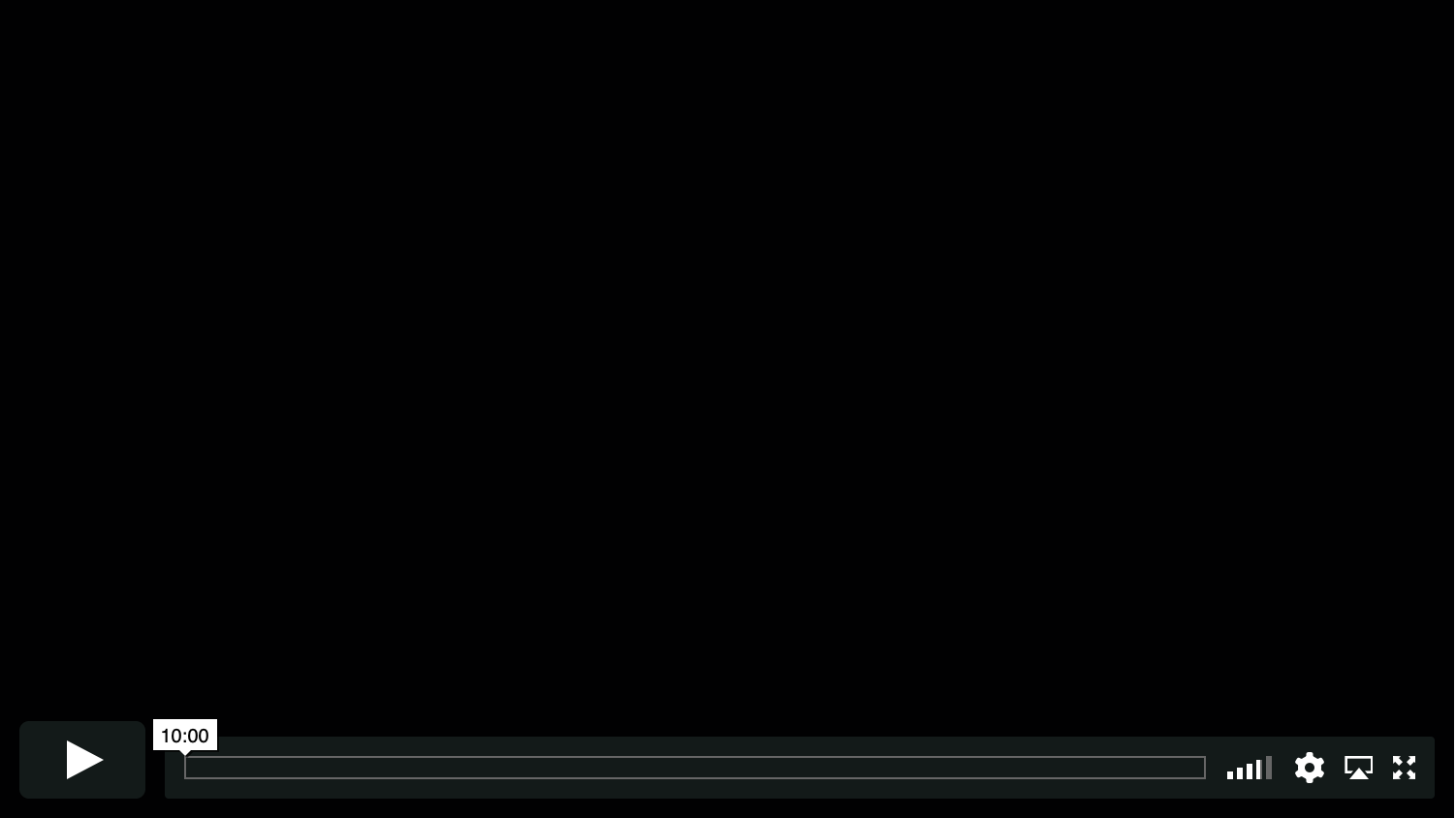
____________
Untitled, 1996
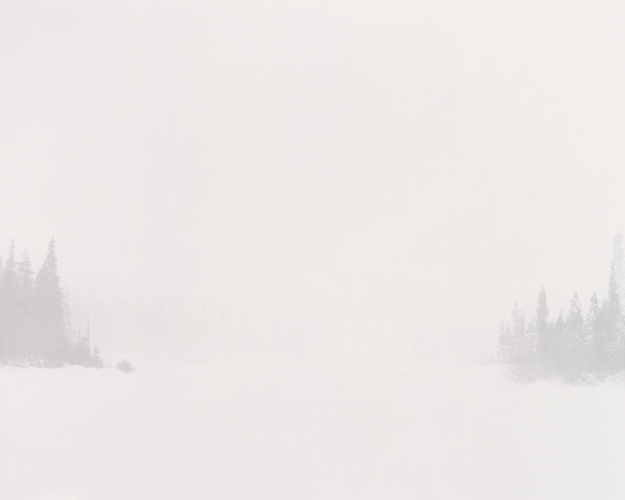
_____________
Audition One: Simone and Max, Audition Two: Darija and Daniel, Audition Three: Amalia and Kirk, Audition Four: Kathleen and Max, Audition Five: Sirushi and Victor, 1994


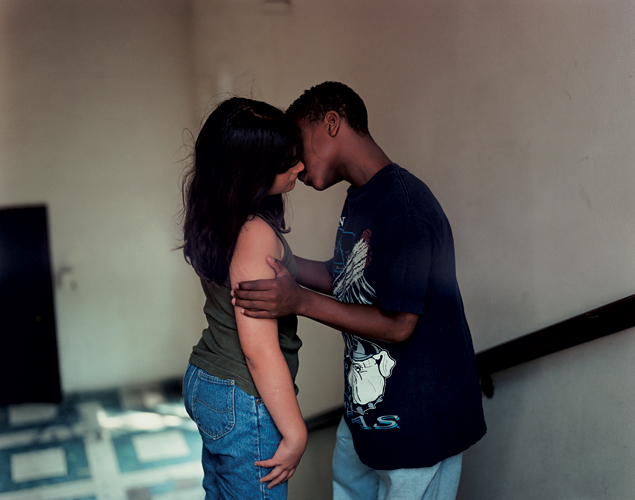
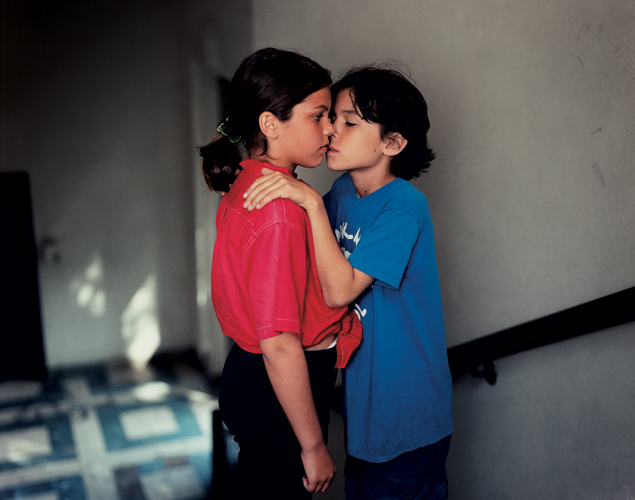

*
p.s. Hey. ** David Ehrenstein, Hi. Not wacky enough somehow, I guess? ** Tosh Berman, Howdy, Tosh! Thank you about the post. Indeed, very lucky. Amy is, as you guessed, the most incredible reader. Kind and thoughtful, but also crystal clear about problems. She and I know each other so well, so I can also read between the lines, and she knows I do. That’s a big part of it too. I really miss having her eyes and brain. Glad you have good folks to pre-read your work. Your memoir certainly is impeccable. ** Sypha, Aw, the days when bigger meant better. ** Bill, Hey, B. Yes, that is a nice title, isn’t it? I think I might relocate it at some point. The Etter’s good. Grumpy, you? ** Steve Erickson, Thanks, but until I get an objective opinion, I’m not counting my novel’s chickens, but, yes, thank you. I’ve never been published by FSG. I think you mean Harper Collins/Harper Perennial? If so, no contract, and literally every single person I worked with or knew there from the heads to the editors to the publicists are long gone. It’s a shadow of itself. So I don’t think I’ll be publishing there. No plans/idea. If my agent agrees to handle the novel, I guess she will have ideas about where to submit it. Review! Everyone, Mr. Erickson has tuned his acuity on Mads Brügger’s COLD CASE HAMMARSKJOLD here. I know Seth Price’s work to some degree, but I don’t know REDISTRIBUTION, or, rather, haven’t seen it. How is it? ** alex rose, Maestro! Me too, if I could have one of them, that’s the one. Oh, the porn that one could shoot with that baby. So happy your blog’s back. Utter glory to see the new work and to be able to keep way up. I know Slava, yes. Yeah, he’s, yeah, nice. What?! Oh, I haven’t heard anything about Jimi closing the gallery. I think Slava is maybe jumping a gossipy gun? Gosh, I hope the gallery reopens, eek. I’ll write to Jimi and urge. If your show happens in April, I’m going to do what it takes to be in NYC while it’s extant. Gaahl, what? You were in touch with Gaahl? And he facilitated a show by you? Whoa, I need to start catching up with him. I thought he went into fashion design or something? Anyway, that’s extremely awesome news. And I’ve never been to Bergen but Gisele and Stephen O’Malley and others swear by it as awesomeness central. Fantastic! That is a great Bowles book, and he is one killer prose guy, that’s for sure. Love you too! Big boon to see you! ** Keatondilla, Jesus, man. I”m glad you’re okay. That’s scary shit. Even though I finally called something ‘French Hole’, I still keep wanting to title things ‘French Hole’ Your EP is alive? Whoa. I will get it stuck in my head either today depending on how lengthy a huge meeting I have is or first thing tonight or tomorrow. Excellence! Everyone, the mighty and ever-mutatingly titled Keaton has just issued an EP of music, songs by him that I think you can listen to for free! Get to know the talents of this most alert and exciting d.l. and artist. It’s called Keaton and the Wassernames – ‘You Need 2 CUTE IT’, and it’s … right … here. Party down in its stead! Thanks, man, and big congrats! ** Mark Gluth, Hi, Mark! Yes, your Paris visit is legendary before it even starts! I’ll be here and ready to visit with you whenever you’re free and into it. Just let me know by email or whatever. I can email you my ph# too, or you can get it from Michael. Can’t wait to see you, man! ** KK, Hi, bud. Yeah, Costa’s films are something else. He has a new one, and I’m dying for it get released. Cool. Slipknot! Ha ha. Actually, that could be really fun. Might be one of those things where, for first few songs, it’s kind of wow, and then you get the flash and game of it, and it starts to lose the charge. But maybe not. I’d be curious to hear how that is. Fun idea: seeing them do their thing. I just finished ‘The Book of X’. Yeah, it’s really terrific, I agree. I don’t know ‘Bad Gateway’, but I’ll find it. I’m good. Yes, it’s fall here and lovely. Wore my coat outside during the day yesterday for the first time in ages. And everyone’s back, and stuff’s happening again. How’s your world? You have a great weekend too! ** Okay. I’ve filled my intermittent galerie with the films and photos of Sharon Lockhart today. I hope you’ll investigate the show. And I will see you, yes, tomorrow.




 Now available in North America
Now available in North America 
Another female artist of great note
Dennis,
I really like the “Audition” series. Feels like a caught breath. Wasn’t able to finish the Dlugos book before the library wanted it back. No renewals. Hope you’re well!
Dennis, Good post. She’s new to me, but I’m liking what I’m seeing/reading/watching.
I’m back. I didn’t go anywhere. I did see Morrissey last night. Great show. Dude started off with How Soon is Now and just tore it up from there. Took some swipes at England, hahaha, and showed some support for the yellow vests. Full of energy and voice sounded great. We had a lot of fun.
Hahaha, yeah, the big dog in a very small poetry workshop kennel. I think the only reason I was that was because I wrote about stuff everyone else was afraid to write about, which I think you can understand.
For me, a part of poetry -it might be the biggest part- is guts. You just put your guts on the page. The other stuff -all the technical stuff- is important too, of course, but you’ve just got to lay it out there. No one else in that group -all nice people- were willing to do that.
Yeah, Lanark is really good. Interesting construction. Written by Alisdair Gray, a Scottish novelist. It’s funny, scary, sad, erudite all at the same time. It includes his illustrations. Postmodern in a lot of ways. Or maybe just modern, I guess. He’s kind of Scotland’s Joyce. A mini-Joyce, of course.
I took off today because I knew I’d be dead for the world. Now I really, really, really need to work on time/sleep management.
Sharon Lockhart is a new name to me and her work is very impactful, those school portraits in particular. Interesting too that she takes in a wider angle to deal with the whole individual vs institution dichotomy, but in a way that is subtle and poetic. There’s a lot going on there.
Today I spent a full day in the DCA print studio making good progress with The Call Issue #3. There’s a few different layers of colour for the Risograph to handle so it may take a while to complete. I do think this is the best edition yet and am excited to see it take shape.
New York was touched by the hurricane’s edge today. The result was pretty mild: it was cold and rainy all day, but we could’ve gotten far worse.
I must’ve confused Harper with the recent, fairly adventurous direction of FSG.
The Price film is quite interesting. It’s intended as a work-in-progress which will keep getting updated (although the fact that the current version, which is the eighth, is getting a week-long run at a movie theater will freeze it in time to some effect.) He started it in 2007, based around his lecture at the Guggenheim then, and it seems to have spiraled out to incorporate material shot before and afterwards. Much of the time, the video’s form replicates the sensory overload and lack of focus induced by the Internet, although it could’ve gone much further. There’s also a recurring theme of storytelling as a necessary part of human life, which made me wonder what stories a project like this is telling while avoiding conventional narrative. My review will be published in Gay City News next week.
Hilton Als on “Giovanni’s Room”
Haha, haven’t made it with a French boy yet, but I’m trying. Hope you like the tunes. It was weird to survive the wreck, def Ace’s “Rock Soldiers”. Woah, I think of the wall sometimes. Everytime I get backed up, I just tell her now, “I just happened to be driving by.” Hope you’re great. Exited about the new novel. Living some weird place inside your movies. Big fat nutty stinkin love
Hello Dennis Cooper ! I just wanted to thank you for everything you share on this blog. Thank you very very much. I also wanted to thank you for making me read Renee Gladman : Event Factory has just been published in French (Voyage à Ravicka). She will be in Paris next week, introducing her book to the French readers : on September, 11th at Librairie Violette and Co, 6pm (she will be discussing the book with Elisabeth Lebovici) ; on September, 12th at Librairie Jonas, 8pm. Thank you once again, and sorry for my poor English. Have a nice week-end. Conrad